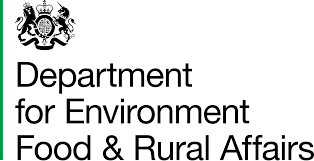HISTORIC PRESS RELEASE : SRA Launches Strategic Plan [January 2002]
The press release issued by the Strategic Rail Authority on 14 January 2002.
The Plan for the future of the railway is published today by the Strategic Rail Authority (SRA), setting out a series of measures to improve Britain’s rail network and ensure the Government’s growth targets are met. The Plan outlines how improvements for passengers and freight customers will be delivered in the short and medium term, as well as setting out long term ideas for the next decade.
The Plan has the full backing of the Government, which has increased public funding for the railway by £4.5 billion compared with the allocation in the Ten-Year Transport Plan. It is the first time in almost 50 years that a plan has been created designed to lead to expansion of the railway. The SRA itself will be restructured to deliver the Plan and new high level appointments were advertised yesterday, including a Chief Operating Officer to ensure a focus on immediate delivery and performance.
Launching the Plan, the SRA’s new Chairman, Richard Bowker, said:
“This Strategic Plan marks a line in the sand; it is the point at which we say enough is enough and begin to deliver a railway fit for the 21st Century. But, we recognise that medium and long – term aims are not enough. The railway has many substantial current problems and we will take all the steps we can to bring about the earliest improvements for rail users.
“£400 million has been allocated to a special Rail Performance Fund set up to co-invest with rail companies in short – term schemes to improve reliability for passengers, particularly commuters. A National Rail Academy is being developed to boost the training of staff in core railway skills. A £430m fund for local passenger improvements is included in the Strategic Plan, as is funding for freight facilities designed to move freight from road to rail.”
Important improvements to the rail network will be delivered within four years. In particular;
- Safety improvements, including the completion of the Train Protection and Warning System and trial schemes for the new European Rail Traffic Management System;
- Replacement of old slam – door Mark I coaches with new trains, providing extra capacity for growth;
- Track and signalling improvements at 100 locations throughout the country to improve capacity or reliability;
- Improved station facilities such as security, information systems and toilets at 1,000 small and medium sized stations throughout the country;
- A new revenue support scheme for rail freight to encourage competition and get more freight off road and onto rail.
- Completion of the first phase of the Channel Tunnel Rail Link by 2003, the first new main line in Britain for almost 100 years, which will release much needed extra capacity on the lines in Kent.
Richard Bowker said:
” This Plan offers for the first time stability, clarity and predictability for future projects and their timescales, enabling all participants in the industry to plan and resource effectively. It is practical and deliverable. It takes the policy objectives established in the Government’s Ten-Year Plan and sets out a quantified, prioritised programme to deliver those objectives. It demonstrates a commitment to safety, and a determination to attract and keep more passengers and freight customers.
“We will invest in the people who keep Britain’s railway moving. I want to see fewer accountants, fewer lawyers and fewer consultants, but more engineers, more operators, more project managers and especially more young graduates and school leavers joining an industry with a future.”
The Plan sets out the SRA’s vision for Britain’s railway where:
- sufficient trains run with sufficient frequency to meet growing passenger demand;
- performance is better, and stable, so that passengers and freight users can plan with confidence;
- the staff are trained, motivated, attentive and helpful;
- the whole journey experience is vastly improved so that, from departure door to destination door, passengers are treated like the valuable customers they are;
- the stations are safe and welcoming, with adequate parking and integration with other modes;
- the trains are reliable and clean, the journey predictable and relaxing;
- there is overall a safe, reliable and value for money product throughout the UK.
Richard Bowker concluded:
“The Plan is based on a railway that is in the private sector, with public accountability and control exercised through the Strategic Rail Authority. The railway industry must urgently address the problems which face it, including the strikes which have caused such misery since the New Year. And, with the industry, the SRA will find effective solutions. Nothing can be allowed to get in the way of the regeneration of our railway. The prize for success will be a system that meets our needs better and better each year. We will get there. ”
The highlights of the Strategic Plan are summarised in the attached Annexe.
Annexe
Highlights of the Strategic Plan
Objectives
The SRA’s Strategic Plan sets out the changes required by 2010 to meet the Government’s targets for rail included in the Ten Year Transport Plan. These are:
- 50% increase in passenger kilometres;
- Reduction in overcrowding which breaches the SRA’s standards;
- 80% increase in freight tonne-kilometres.
The Plan also meets, where possible, the SRA’s other priorities set by Government – including better integration with other transport modes; expansion of capacity; promoting the use of the railway network and encouraging its use. The priorities have been developed following consultation with key stakeholders such as the Rail Passengers Council, Scottish Executive, Welsh Assembly Government, and local and regional authorities. The plan has been informed by the emerging findings of the multimodal studies.
Priorities
The plan sets clear priorities based on the need for mandatory safety improvements, emerging information about European Union requirements on interoperability and the cost of improving accessibility in line with the Disability Discrimination Act. It also takes account of the constraints of the specialist rail engineering resources available, and the need for schemes to represent value for money for taxpayers. In particular, the schemes are based on the need to stabilise the industry and improve performance, and on meeting the Government objectives set out in the Ten-Year Transport Plan. The priorities include allocation of sufficient resource to plan effectively for the long-term. These priorities are reflected in the investment programme and the allocation of SRA financial support. The highlights for the short, medium and long-terms are set out below.
Short Term (to 2005)
- Completion of the new TPWS safety system by 2003;
- 1700 new coaches delivered by 2004, to replace older trains and provide for growth;
- A National Rail Academy to ensure adequate training of staff in the specialised skills and competencies required to run a complex rail operation;
- A £400m Rail Performance Fund to direct resources to early improvements in reliability;
- New trains and more frequent services on Virgin West Coast services between London Euston, the West Midlands, the North West, North Wales and Scotland, coupled with upgraded infrastructure giving higher line speeds;
- New trains and infrastructure improvements for the Virgin Cross Country franchise, serving Scotland, the North of England, the Midlands, South Wales, the West Country and the South Coast, with a big increase in service frequency, improved standards of travel and better reliability;
- The programme of new and extended passenger franchises, restarted in December 2001;
- Section 1 of Britain’s first new main line railway for a century operating by 2003, the Channel Tunnel Rail Link, with trains running at 300 kph (186 mph), carrying both international and domestic services;
- New franchises negotiated, with a simplified structure and fewer operators;
- A new deal for passengers with disabilities, with all trains accessible by wheelchair passengers by 2004 and a multi million pound programme to improve station access and special training for staff;
- A new Revenue Support Scheme to encourage competition for freight on rail, particularly in the intermodal market and for flows which are less than a complete train load;
- New lines and stations, including the Vale of Glamorgan Line (Barry – Bridgend) and the Edinburgh Crossrail park and ride scheme, funded through the Rail Passenger Partnership scheme;
- A study of the feasibility of a National Rail Test Track to ensure that new trains work reliably when they start carrying passengers or freight on the rail network;
- A programme of investment in smaller, local schemes to expand capacity or provide additional facilities for both freight and passenger services around the country;
- Continuing action to tackle trespass and vandalism, the cause of the majority of casualties on today’s railway;
- Resources to plan medium and long- term projects.
Medium Term (2005 – 2010)
The medium-term strategy is to deliver the growth targets set in the Government’s Ten-Year Transport Plan and to provide more capacity to relive passenger overcrowding. Highlights of the projects required are:
- Longer trains on a number of commuter routes to relieve overcrowding;
- New trains and station improvements on the route between London St Pancras, the East Midlands and South Yorkshire, through the Midland Mainline franchise extension;
- Upgrading the TransPennine route to provide more capacity for extra passenger and freight services, and to reduce journey times;
- Upgrading freight routes from Felixstowe and Southampton to the West Midlands, the North of England and Scotland to take larger containers which at present are transported by road;
- New trains, additional capacity and better integration with bus, Underground and light rail delivered through the long term franchises agreed for Chiltern, South Central and South West Trains;
- Thameslink 2000 scheme to provide high frequency services across Central London, linking a wider range of destinations north and south of the river, providing a practical alternative to many journeys via the M25, and relieving congestion on the Underground;
- Extension of the East London Line, integrating Underground and National Rail services and providing better links to Docklands;
- Local projects throughout Great Britain, funded through the £430m Rail Passenger Partnership scheme.
Long Term (Beyond 2010)
Beyond 2010, the role of the railway will become even more important, and the key network capacity issues will have to be addressed. In particular, this involves:
- High Speed Line. Additional capacity between London, the North of England and Scotland for both freight and passenger services; to include consideration of a new line with a high speed capability, and provision of capacity for more North – South rail freight movements;
- Kings Cross/St Pancras. Integrated development of the main line and Underground stations (and bus and taxi connections) as a ‘superhub’
- West Midlands/Manchester Capacity. Relief of congestion with new infrastructure in regional centres such as Birmingham and Manchester;
- Multimodal Studies. Development and implementation of rail projects identified as required in the multimodal studies;
- Rail/air. Further development of airport links, particularly at Heathrow (Airtrack), Glasgow and Edinburgh airports;
- Great Western Main Line. Development of plans, linked with track and signalling renewal for the routes from London Paddington to South Wales and the West of England;
- Crossrail. ‘Regional Express’ cross-city schemes such as the London Crossrail project, being developed jointly with TfL. Similarly, work will continue on the Merton – Hackney route in London.
- South London Metro. Further development of south London suburban routes to provide ‘metro’ type frequencies and standards of service at peak as well as off-peak times;
- New lines/terminals. Connecting new freight and passenger markets with new or reinstated railways or new siding connections.


